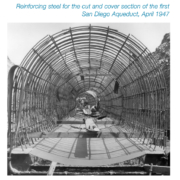Another Dry Year In The Colorado River Basin
2018 has brought record-low snowpack levels to many locations in the Colorado River Basin, making this the driest 19-year period on record. With the depressed snowpack and warming conditions, experts indicate that runoff from the Rocky Mountains into Lake Powell this spring will yield only 42 percent of the long-term average. With drought and low runoff conditions dating back to 2000, this current period is one of the worst drought cycles over the past 1,200-plus years.




